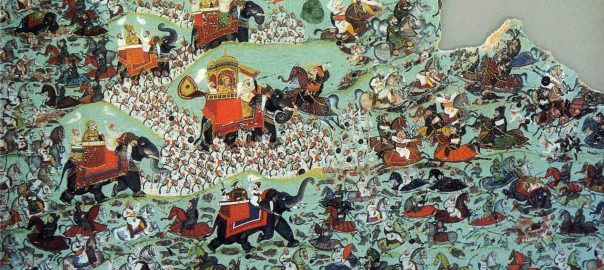Well, we’ve recently taken a bit of a peek at the state of two capable non-Christian Empires that were growing and doing significant things in the mid-16th century CE: the Ottoman and Mughal empires. Today, with the 1576 CE passing of Shah Tahmasp in Safavid Iran it is time to look at the empire he left behind him. But first a couple of quick updates from elsewhere:
Spanish conquistadors expanding grip; inflicting death, misery on indigenes
1576 CE saw the conquistadors in “New Spain” (that is, today’s Mexico) establishing a new settler-city, León, in the deep interior of the country. The pre-colonial Indigenous people of the area had been mainly Chichimecas, mostly of the Guamare and Guachichil subgroups. The first Spanish settlers arrived in 1530– and the Jesuits arrived just one year later. English-WP tells us:
Homesteads were granted by the governor of Nueva Galicia, Francisco Vásquez de Coronado to Spaniards Rodrigo de Vázquez and Juan de Jasso. Farming and cattle-raising was introduced here around 1546 by the Spaniards but these settlers were under constant threat by the Chichimecas, who recognized the Spanish as invaders. These settlers requested assistance from the viceregal authorities in Mexico City.
As a response, viceroy Martín Enríquez de Almanza ordered the founding of a city here, with the name of León… Juan Bautista de Orozco founded the village of León on 20 January 1576, creating its first town council and laying out its initial streets. In 1580, it attained the rank of “alcadía mayor” meaning it has governing authority of much of the land and smaller towns surrounding it from the Sierra de Comanja to the Lerma River.
This sounds so like Israel’s practices in Palestine!

And at the exact same time, the Indigenous people of “New Spain” started entering yet another period of the extremely damaging cocoliztli epidemic, which according to the figure at right caused 1-2 million deaths in an Indigenous population that had already been severely weakened and depleted over preceding decades.
Mughals expand, consolidate
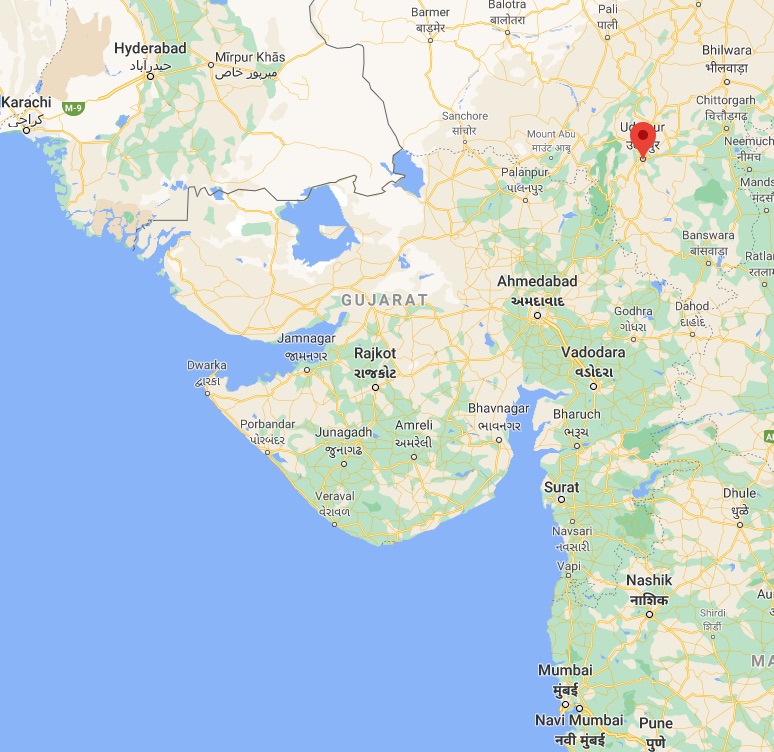
Worth mentioning that in 1576 CE the Mughal emperor, Akbar, annexed Bengal. His general Man Singh I also fought and won the Battle of Haldighati, which basically involved cleaning up some Rajput remnants who after the Mughal seizure of Chittorgarh in 1568 had remained holed up in a mountainous part of Rajasthan called Mewar (also Udaipur.)
English-WP tells us:
The site of the battle was a narrow mountain pass at Haldighati near Gogunda in Rajasthan. [The Rajput defender] Maharana Pratap fielded a force of around 3,000 cavalry and 400 Bhil archers. The Mughals were led by Raja Man Singh of Amber, who commanded an army numbering around 10,000 men according to Persian sources, Mewari sources give an account of 80,000 Mughal troops against the 20,000 strong Mewari army. While both accounts differ significantly in total numbers, they agree on the point that the Mughal army outnumbered the Mewari troops by a factor of four to one. After initial successes by the Mewari army in battle, the tide slowly turned against them. In a fierce battle in which Pratap found himself wounded, he called a tactical retreat. A few of his men under Jhala Man Singh covered the retreat in a rearguard action…
With Rana Pratap able to make a successful escape, the battle failed to break the deadlock between the two powers. Subsequently, Akbar led a sustained campaign against the Rana [the local Rajput king], and soon, Goganda, Udaipur, and Kumbhalgarh were all under his control. Pressure was exerted by the Mughals upon the Rana’s allies and other Rajput chiefs, and he was slowly but surely both geographically and politically isolated. The Mughals’ focus shifted to other parts of the empire after 1579…
(The banner image above is an 1822 painting of the Battle of Haldighati, by Chokha.)
Iran’s Shah Tahmasp dies after 52-year reign
Tahmasp had come to the throne at the age of ten, upon the death of his father, Ismail I, who had founded the Safavid dynasty in around 1501. Prior to then, the Safavis had been a slightly nomadic and armed Sufi order, first founded in the highlands of the north of today’s Iran and Azerbaijan around 1301 CE.
In 1447, a guy called Shaikh Junayd had become head of the Safaviyya order; he was described as “someone who wanted not only spiritual authority but also material power.” Most of present-day Iran seemed to have been in political chaos at that time.
Ismail I was the grandson of Shaykh Junayd.
The WP page on Ismail I tells us this:

The dynasty founded by Ismail I would rule for over two centuries, being one of the greatest Iranian empires and at its height being amongst the most powerful empires of its time, ruling all of present-day Iran, Azerbaijan Republic, Armenia, most of Georgia, the North Caucasus, Iraq, Kuwait and Afghanistan, as well as parts of modern-day Syria, Turkey, Pakistan, Uzbekistan and Turkmenistan. It also reasserted the Iranian identity in large parts of Greater Iran. The legacy of the Safavid Empire was also the revival of Iran as an economic stronghold between East and West, the establishment of an efficient state and bureaucracy, its architectural innovations and its patronage for fine arts.
One of his first actions, was the proclamation of the Twelver sect of Shia Islam to be the official religion of his newly formed state, which had major consequences for the ensuing history of Iran. Furthermore, this drastic act also gave him a political benefit of separating the growing Safavid state from its strong Sunni neighbors—the Ottoman Empire to the west and the Uzbek confederation to the east. However, it brought into the Iranian body politic the implied inevitability of consequent conflict between the shah, the design of a “secular” state, and the religious leaders, who saw all secular states as unlawful and whose absolute ambition was a theocratic state.
The dude was also an accomplished poet.
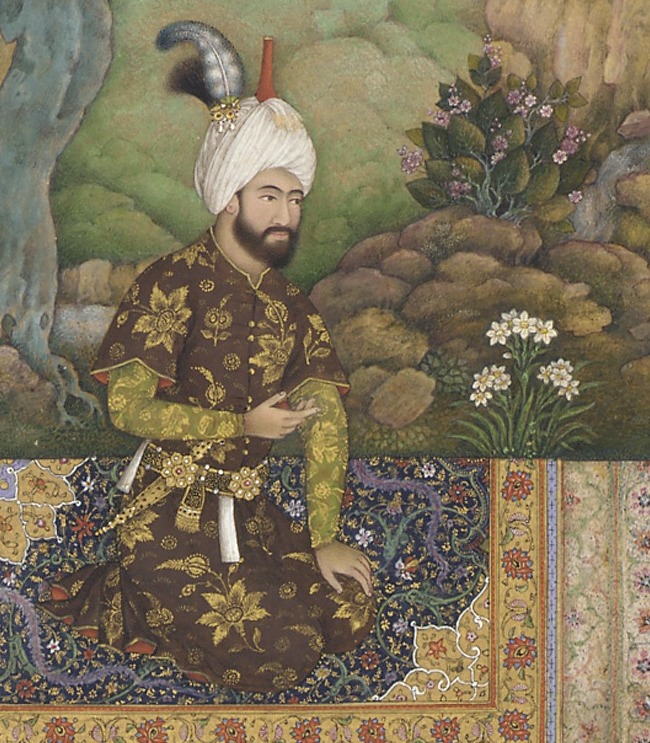
Bear with me, we have now reached Tahmasp. So, after he succeeded his dad at age ten, the country came under the effective rule of the Qizilbash, who had been the warlordy kind of enforcers for the Safaviyya for a while. But the Qizilbash soon fell out among themselves and by the time he was 19 (in 1533), Tahmasp was able to assert his own control.
The main challenges Tahmasp faced during his reign were apparently external– from both the Ottoman Empire and from Shaybanid Uzbeks, but mainly I think from the Ottomans, who launched four invasions of Iranian-held territory between 1533 and 1553.
This WP page tells us:
In 1534, Suleiman [the Magnificent] invaded Iran with a force numbering 200,000 men and 300 pieces of artillery. Tahmasp could only field 7,000 men (of dubious loyalty) and a few cannons. The Ottomans seized the Safavid capital Tabriz, and captured Baghdad. Tahmasp avoided direct confrontation with the Ottoman army, preferring to harass it then retreat, leaving scorched earth behind him. This scorched earth policy led to the loss of 30,000 Ottoman troops as they made their way through the Zagros mountains and Suleiman decided to abandon his campaign.
Next, Suleiman tried to exploit the disloyalty of Tahmasp’s brother Alqas Mirza, who was governor of the frontier province of Shirvan. Alqas had rebelled and, fearing his brother’s wrath, he had fled to the Ottoman court. He persuaded Suleiman that if he invaded the Iranians would rise up and overthrow Tahmasp.
This sounds so like Shahpur Bakhtiar in 1980, or Ahmed Chalabi (with respect to Iraq) in 2002-3… Back to the main story:
In 1548, Suleiman and Alqas entered Iran with a huge army but Tahmasp had already “scorched the earth” around Tabriz and the Ottomans could find few supplies to sustain themselves. Alqas penetrated further into Iran but the citizens of Isfahan and Shiraz refused to open their gates to him. He was forced to retreat to Baghdad where the Ottomans abandoned him as an embarrassment. Captured by the Iranians, his life was spared but he was condemned to spend the rest of his life in prison in the fortress of Qahqaha.
During the final Ottoman invasion of Iran in 1553, Tahmasp seized the initiative and defeated Iskandar Pasha near Erzerum. He also captured one of Suleiman’s favourites, Sinan Beg. This persuaded the sultan to come to terms at the Peace of Amasya in 1555. The treaty freed Iran from Ottoman attacks for three decades. Nevertheless, Tahmasp took the precaution of transferring his capital from Tabriz to Qazvin, which was further away from the border.
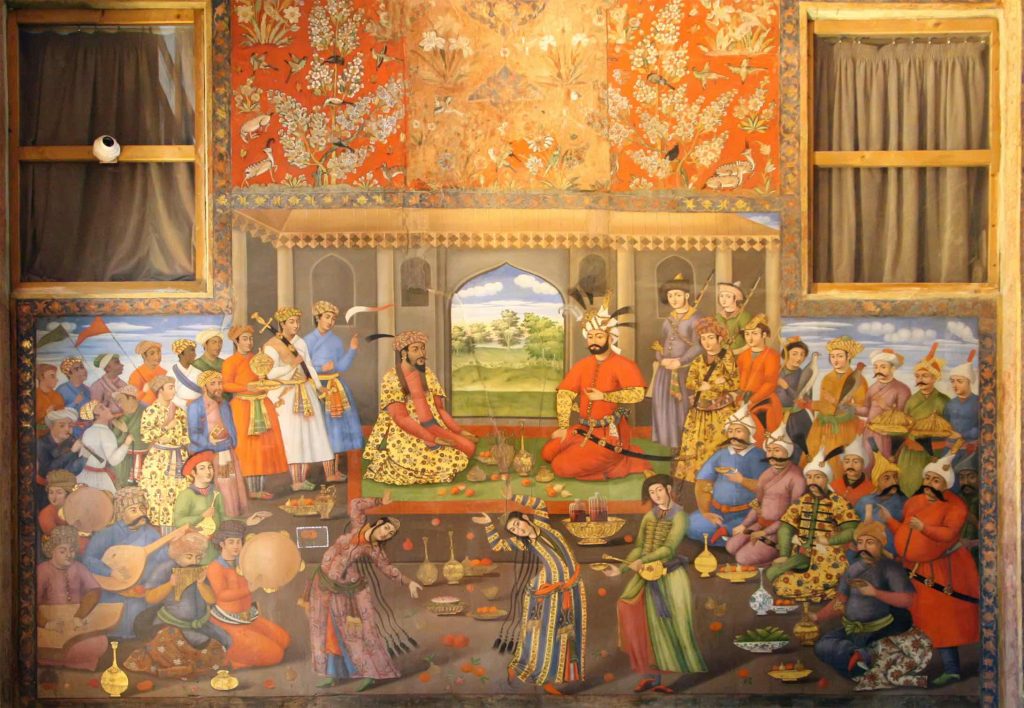
Other notable foreign-policy moves Tahmasp made included offering sanctuary to– as we’ve seen– both Suleiman’s errant son Bayezid and the Mughal emperor Humayun after his deposing.
Altogether, he seems to have done well at keeping most of Iran unified and pretty well administered. He also continued Ismail’s policy of intensively promoting the Shia-ization of Iranian society. (I’ll note that English-WP has a good page on that whole issue– and another one on the Safavids in general.) I suppose you could compare the Safavids’ Shia-ization campaign with the (often brutal) campaigns the Reconquistadores of the Iberian Peninsula made to enforce the Catholic faith on the majority-Muslim populations of the recently conquered Muslim principalities there. (Though I don’t recall reading about any Shi-ite “Inquisition” in Iran at that time; but it may have happened.)
He also didn’t seem to have done much to prepare for an orderly succession of power after his death. This, from his page on WP:
In 1574, Tahmasp fell ill and discord broke out among the Qizilbash once more, this time over which prince was to succeed him. The shah’s Georgian and Circassian wives had also introduced a new faction into the court. Seven of Tahmasp’s surviving sons were by Georgian or Circassian mothers and two by a Turcoman. Of the latter, Mohammad Khodabanda was regarded as unfit to rule because he was almost blind, and his younger brother, Ismail, had been imprisoned by Tahmasp since 1555. Nevertheless, one court faction supported Ismail, while another backed Haydar Mirza Safavi, the son of a Georgian. Tahmasp himself was believed to favour Haydar but he prevented his supporters from killing Ismail.
Tahmasp died as a result of poison, although it is unclear whether this was by accident or on purpose. On his death, as expected, fighting broke out between the different court factions. Haydar was killed and Ismail emerged triumphant as Shah Ismail II.
Well, actually, the manner of Ismail’s succession was pretty dramatic. He had been imprisoned for 21 years by then, remember, and was still there when his dad died. Haydar was all poised to take over, and did so, proclaiming himself king. But Tahmasp’s favorite (Circassian) daughter Pari Khan Khanum favored Ismail and she did a lot of conniving etc.
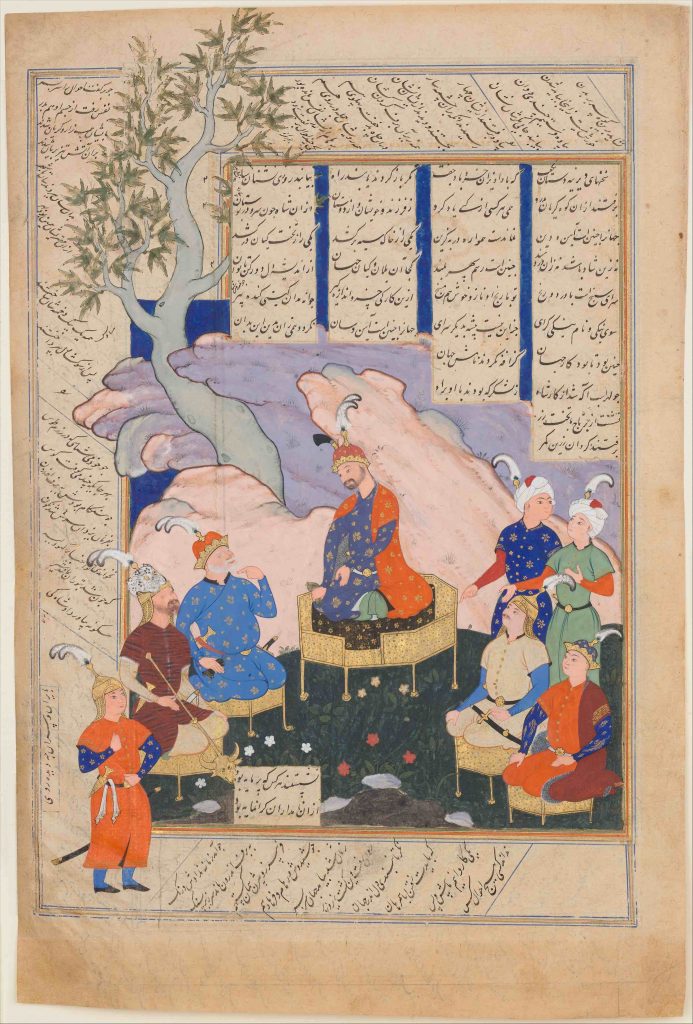
At a crucial point,
the supporters of Ismail Mirza, entered the palace and went to its inner part. However, Haydar Mirza’s supporters shortly managed to break through the gate, but did not reach there in time—Ismail Mirza’s supporters found Haydar Mirza, dressed as a woman in the royal harem. He was immediately captured and beheaded. His bloody head was then thrown down to Haydar Mirza’s supporters, who stopped their resistance, which thus meant that Ismail Mirza could safely ascend the throne. During the dynastic struggle between the two brothers, Pari Khan Khanum became the de facto ruler of the state; it was she who ordered all the princes and top-ranking members of the realm to gather at Qazvin’s main mosque on 23 May 1576, where a famous cleric named Mir Makhdum Sharifi, read the khutbah in the name of Ismail Mirza, thus confirming him as the new king of the Safavid dynasty.
Pari Khan Khanum continued to be a powerful eminence grise. But–spoiler alert!– Ismail was not grateful to her and turned against her. Then, 15 months after his coronation, in late November 1577, he was found dead. “The court doctors, who checked the corpse, suspected that he may have died from poison. The general agreement was that Pari Khan Khanum had resolved to poison him with the help of concubines of the inner harem in retaliation for his bad behaviour towards her.” His nearly blind younger brother Mohammad Khodābandeh then succeeded him…
